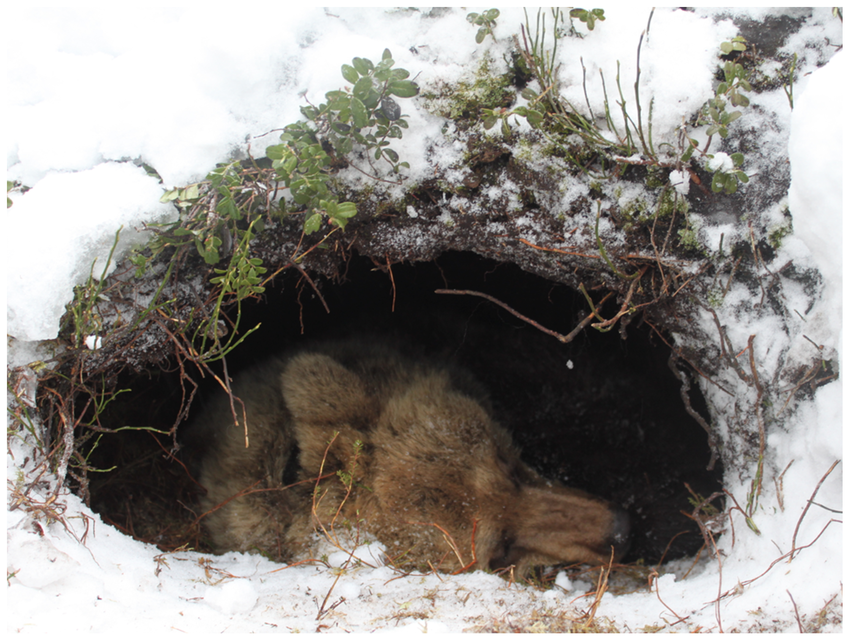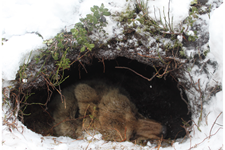News

November 28. - 2022
Rhythm in Body Temperature During Hibernation Influenced by Snow Depth Covering the Dens
The Scandinavian brown bear (Ursus arctos) has adapted to harsh winter conditions in northern Scandinavia by going into hibernation. During hibernation, different biological rhythms in activity and temperature have been noticed which are naturally regulated by environmental factors such as daylight. Research of various rhythms in wild animals has contributed greatly to the field of ecology, but little focus has been on the physiology behind these rhythms. In a current study the changing rhythms in activity, body temperature and heart rate were in focus. Furthermore, the influence of which endogenous and exogenous factors had an impact on the rhythmicity of previous mentioned parameters were investigated.
Temperature taken every 5-30 minutes for the duration of the study
Scientists from the Inland Norway University of Applied Science with colleagues from USA, Austria, Germany, France, Sweden, and Norway, implanted 44 Scandinavian brown bears with Star-Oddi’s DST centi-T temperature loggers that were set to take measurements every 5-30 minutes for the duration of the study. Data from 32 brown bears and 100 individual 15-25-day time spans during hibernation were used. Heart Rate and Activity was also recorded with other devices.
Infradian rhythm in body temperature during hibernation
While in hibernation the bears showed cycles in body temperature that were more than 24 hours long. Snow depth influences the amount of detectible light in the den, and the higher the snow depth covering the den the higher probability was for the bears to show infradian rhythms in body temperature. The likelihood of a bear showing an infradian rhythm in body temperature during hibernation was 79%, which indicates that the light-dark cycle is not influencing the rhythm of the body temperature during hibernation. Rhythms in activity seem to be diel (including day and night), while the heart rate is either diel or infradian.
Ultradian rhythm in body temperature and activity
The bears were most likely to show diel rhythms in body temperature and activity when emerging from hibernation with increasing daylight in March to May. The Scandinavian brown bear is more active than grizzly bears in the early summer, as it coincides with mating and predation of moose calves. With decreasing daylight, the Scandinavian brown bear showed tendencies to go into ultradian rhythm that consistently were 12 hours long, which coincides with them foraging solely on berries. Also, maybe not surprisingly, the bears living closely to areas of hunting became nocturnal after human encounters.
The paper was published in Frontiers in Physiology and can be accessed here
Photo from the Scandinavian Brown Bear Research Project
